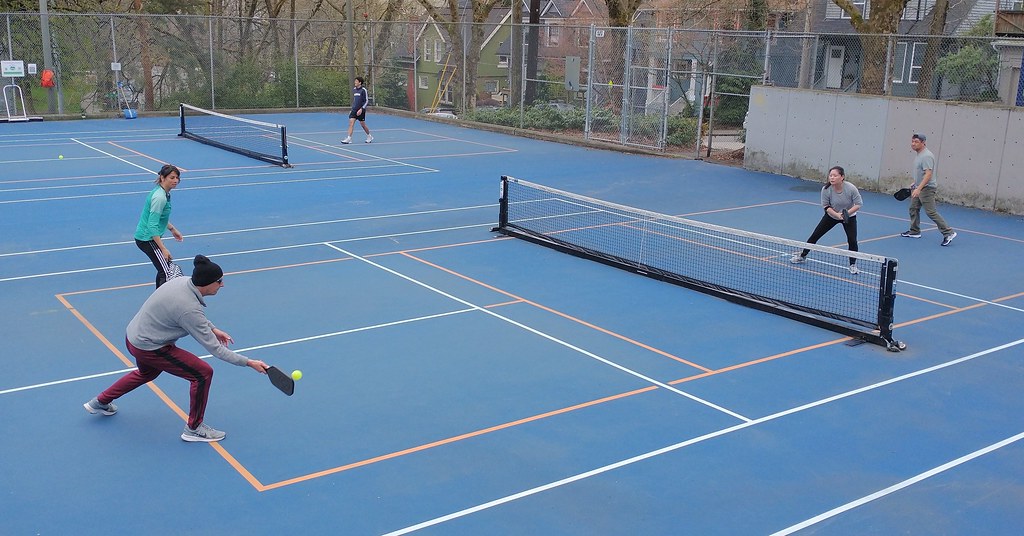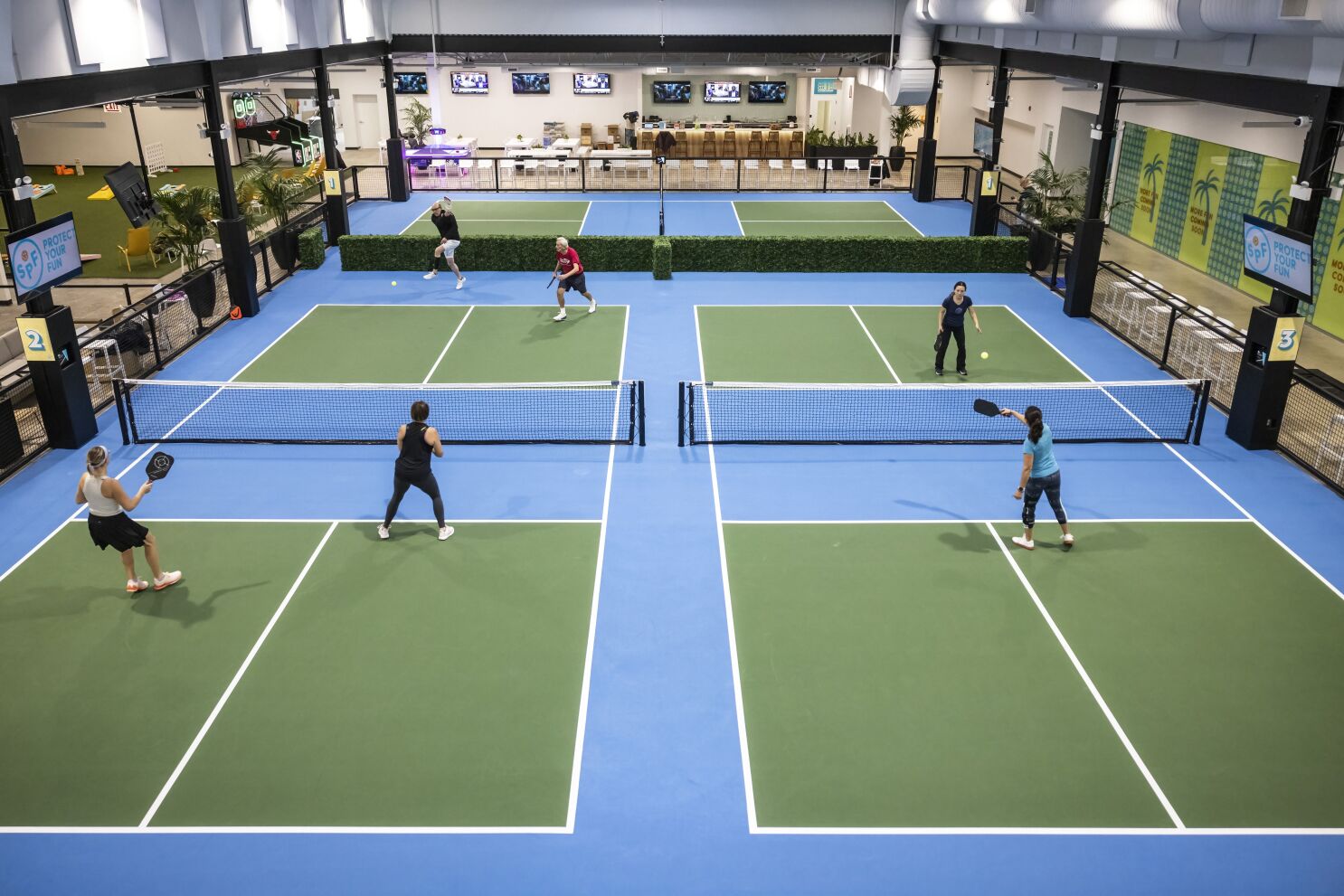Boost Your Outdoor Living: Structure a Custom Backyard Pickleball Court
Boost Your Outdoor Living: Structure a Custom Backyard Pickleball Court
Blog Article
Discovering the Numerous Choices for Backyard Pickleball Courts: A Home owner's Guide to Setup and Upkeep
As the popularity of pickleball remains to increase, lots of homeowners are considering the installation of a devoted court in their yards. This endeavor calls for cautious examination of different factors, such as the available area, appropriate surface products, and ongoing maintenance demands. Comprehending these aspects is important for producing a pleasurable and useful having fun environment. The journey from conception to implementation can be complicated, triggering the need for a comprehensive overview that deals with both setup and maintenance approaches. What are the best techniques to ensure your court stays beautiful and practical over time?
Reviewing Your Area
When thinking about the enhancement of a pickleball court to your yard, exactly how can you properly evaluate the available space? The very first step is to gauge the measurements of your lawn, ensuring that you have enough room for a regulation-sized court, which gauges 20 feet by 44 feet for doubles play (backyard pickleball court). It's important to account for additional room surrounding the court to facilitate activity and boost gameplay, commonly recommending an additional 10 feet on each side
Next, assess the terrain of your yard. A degree surface area is optimal for a pickleball court, as uneven ground can lead to safety and security threats and impact gameplay. If your lawn inclines or has obstructions such as trees or landscaping features, consider how these elements will affect your court's area and functionality.
Finding Court Surfaces
Choosing the right surface for your yard pickleball court is important for optimizing performance and player safety. The choice of court surface not only influences gameplay however likewise affects the longevity and upkeep of the court.
Asphalt and concrete give a hard, long lasting surface that can tear and hold up against the wear of normal play. To alleviate this, several homeowners choose for supported surfaces or specialized layers that use some level of shock absorption.
Conversely, modular sports ceramic tiles are a progressively preferred choice. These floor tiles are made specifically for pickleball and offer exceptional traction, drain, and shock absorption. They can likewise be set up over existing surfaces, making them a versatile alternative for lots of yards.
When picking a surface, think about variables such as environment, budget plan, and designated level of play. An appropriate court surface will certainly improve your having fun experience while making certain safety and security and long life for your backyard pickleball court. Making a notified choice is necessary for making the most of satisfaction and performance.
Installment Process Summary
Setting up a yard pickleball court generally entails a number of essential actions that make sure both performance and durability. The initial step is to choose an appropriate place in your yard, considering factors such as closeness, sunshine, and water drainage to your home. As soon as the website is chosen, clear the location of any greenery, rocks, or particles to produce a degree structure.
Following, outline the measurements of the court, which must be 20 feet large by 44 feet long for a common pickleball court (backyard pickleball court). After marking the boundaries, excavate the area to a depth of about 4 to 6 inches, making certain correct drain. This excavation will certainly enable a secure sub-base
Following this, install a base layer of crushed rock or smashed stone to promote drainage and stability. Small this layer completely before proceeding. After the base is established, you Web Site can put a concrete piece or mount your picked court surface materials, ensuring they stick to the dimensions.
Upkeep Tips and Strategies
To ensure the long life and efficiency of your yard pickleball court, routine maintenance is vital. Begin by regularly examining the surface area for splits, particles, and any type of indicators of wear. Quickly attend to any concerns to avoid further damage. Use a broom or fallen leave blower to maintain the court tidy, removing fallen leaves, dirt, and various other particles that can influence gameplay.

Furthermore, monitor your court's drainage to stop water merging, which can bring about surface area damage in time. Ensure that the bordering landscape guides water away from the court. Think about sealing the surface every few years to improve sturdiness. if your court is made of asphalt or concrete.
Finally, establish a regular schedule for upkeep tasks, consisting of seasonal checks and repair work, to maintain your court in optimal condition and prepared for play. Regular upkeep not only enhances efficiency but also prolongs the life of your backyard pickleball court.
Cost Considerations and Budgeting
When planning for a yard pickleball court, understanding the different look at this site expense factors to consider is essential for effective budgeting. The overall expense can differ significantly based on elements such as court dimension, surface area product, and installment intricacy.
Preliminary prices generally include website prep work, which might involve grading and leveling the land, followed by the option of surface area-- alternatives range from asphalt to concrete, with each material affecting both long-term and in advance costs. As an example, concrete supplies sturdiness but features a greater price, while asphalt may provide a more economical choice.
In addition, consider the costs related to fence, illumination, and accessories such as nets and paddles - backyard pickleball court. Fence is necessary for maintaining rounds contained, and illumination can extend playtime into the evening hours

Verdict
To conclude, the installation of a yard pickleball court includes cautious consideration of space, surface materials, and upkeep demands. Selecting ideal dimensions, such as the suggested 20' x 44', in addition to resilient surface area choices like asphalt, concrete, or modular sports floor tiles, adds to a functional field. Regular maintenance and tracking for wear are important to make sure the court's longevity and ideal efficiency, inevitably enhancing the recreational experience for all customers.
A degree surface area is ideal for a pickleball court, as unequal ground can lead to safety and security risks and affect gameplay. A well-chosen court surface area will certainly boost your playing experience while guaranteeing security and long life for your yard pickleball court.Following, lay out the measurements of the court, which must be 20 feet wide by 44 feet long for a common pickleball court. After the base is established, you can pour a concrete piece or install your our website selected court surface products, ensuring they adhere to the dimensions.
In verdict, the installation of a yard pickleball court involves cautious factor to consider of area, surface area materials, and maintenance needs.
Report this page